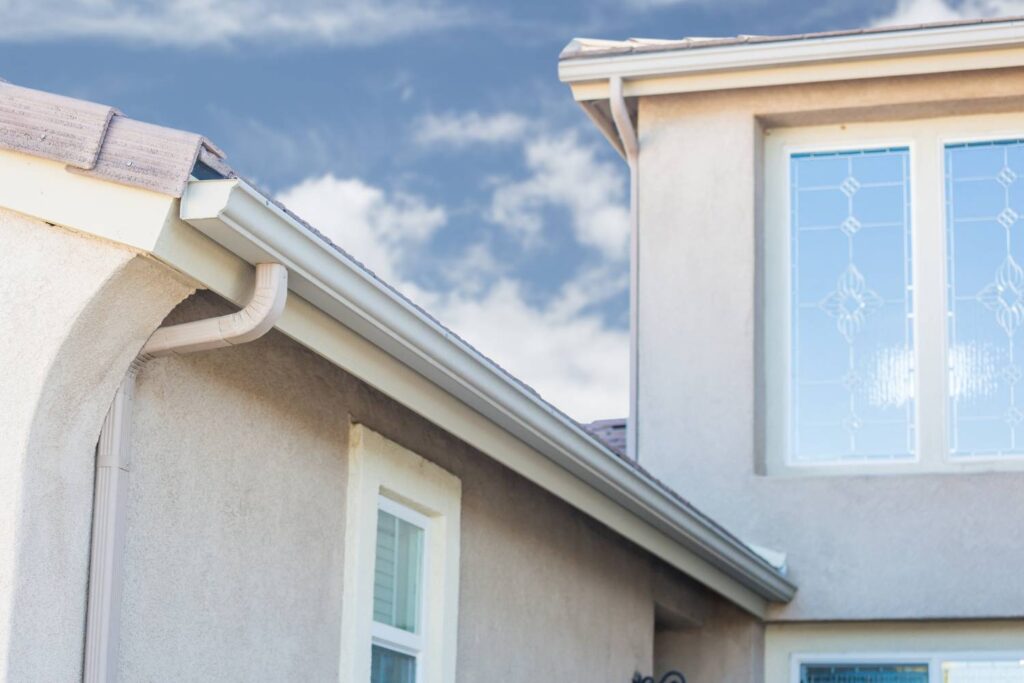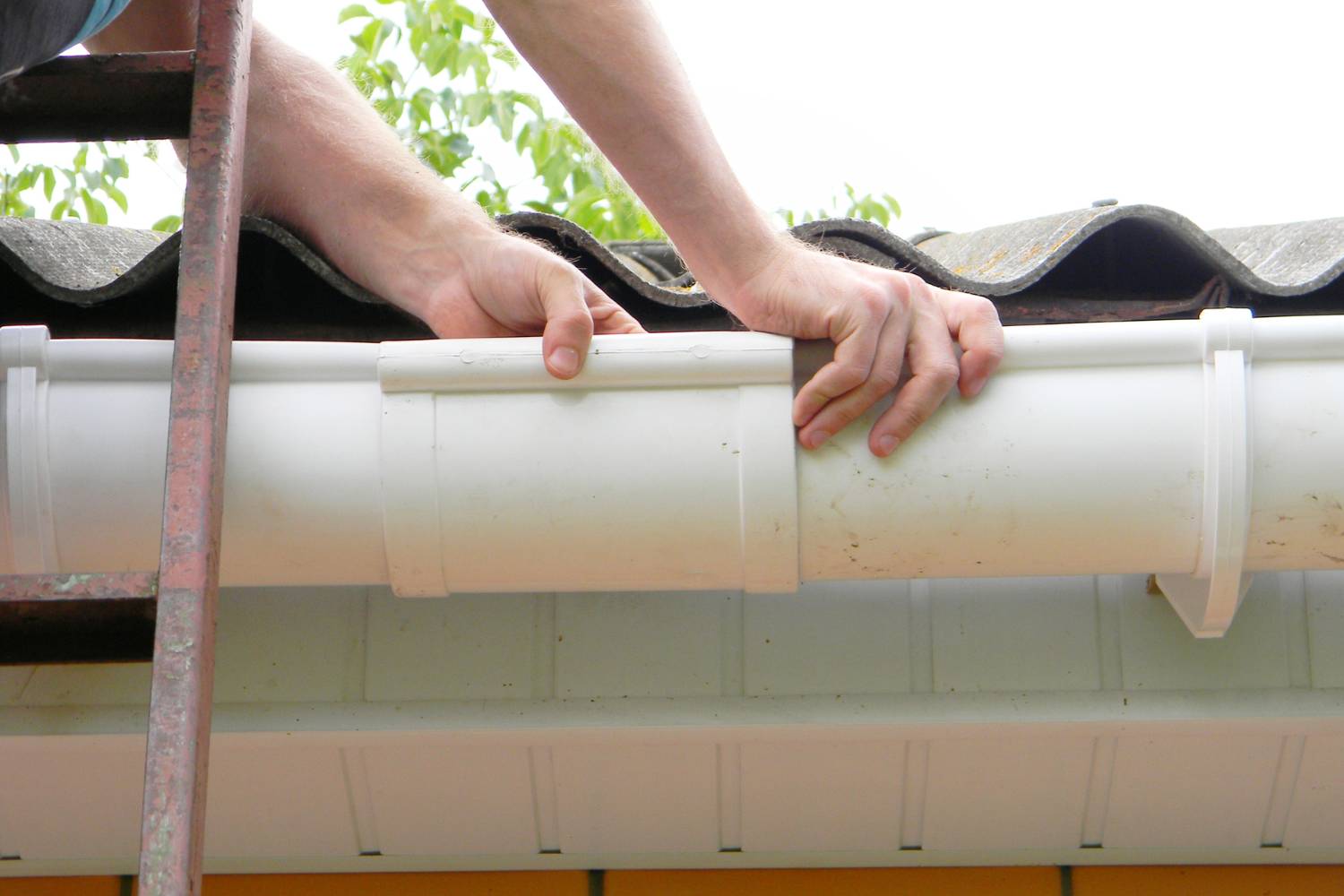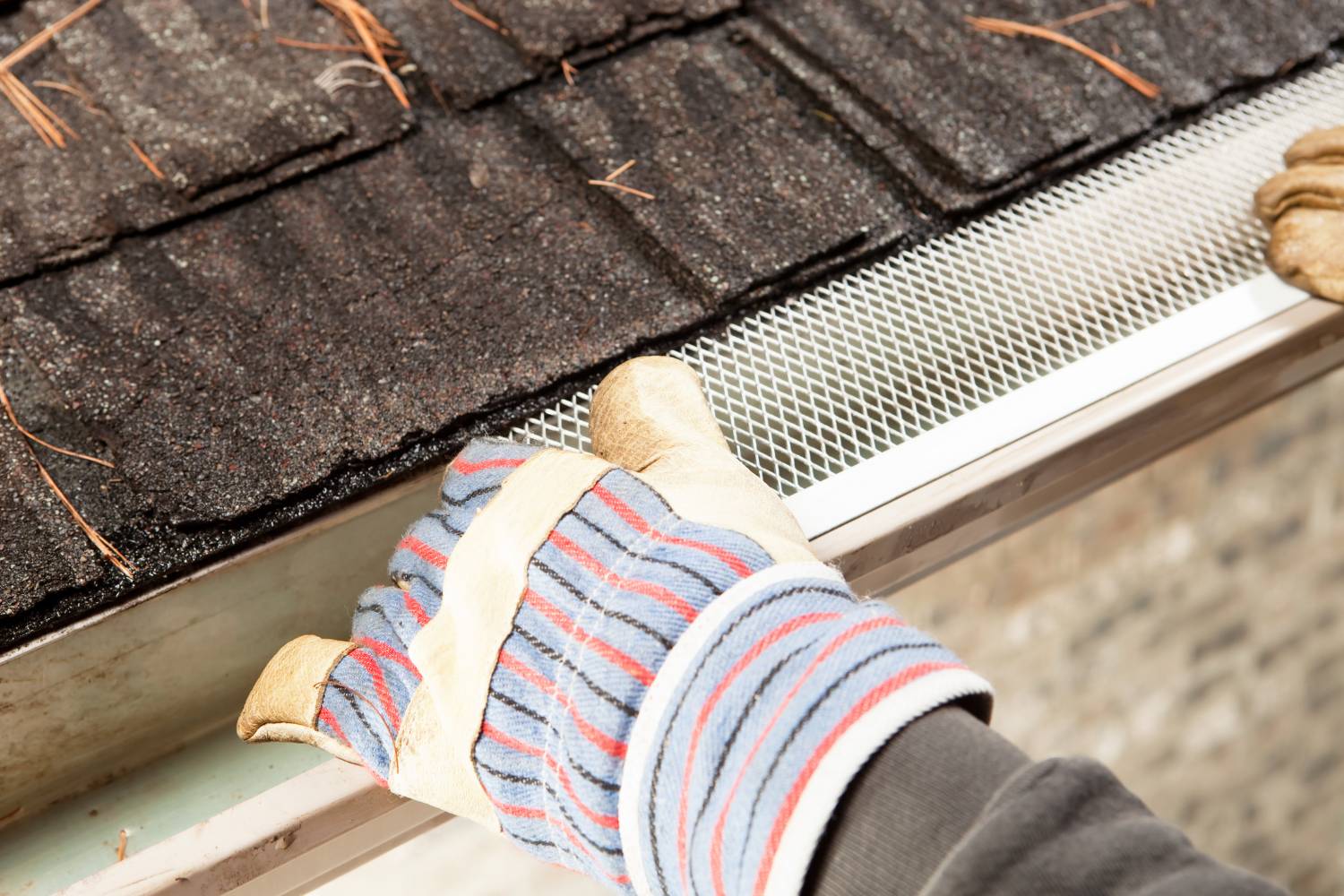Gutters are a crucial yet often overlooked part of your home’s defence system against water damage. When properly installed, gutters efficiently direct rainwater away from your roof, walls, and foundation, preventing a host of issues like foundation damage, roof leaks, soil erosion, and damage to your siding and paint. However, improperly installed gutters can lead to costly repairs and damage to your home. So, how do you ensure your gutters are correctly installed and functioning as they should?
Whether you're taking a DIY approach or hiring professionals, understanding the basics of gutter installation is key. This guide will walk you through the essential steps for installing gutters, highlight common mistakes to avoid, and provide tips for maintaining your gutter system. By following these guidelines, you can ensure your gutters not only look good but also perform effectively, keeping your home safe and dry.
Proper gutter installation involves more than just attaching the gutters to the roofline. It requires careful planning and measuring, selecting the right materials and components, preparing the fascia board, and ensuring the correct slope for water flow. Regular maintenance and inspections are also vital to keep your gutter system in optimal condition.
Potential Issues with Improper Installation
Proper installation of gutters is crucial for protecting your home from water damage. Ensure your gutters are correctly pitched, appropriately sized, well-placed, and securely attached. Regular maintenance and professional installation can prevent the numerous issues associated with improper gutter installation.
Gutters are essential for directing water away from your home, preventing damage to the structure and foundation. However, improper installation can lead to a range of problems, each potentially causing significant and costly damage.
- Improper Gutter Pitch: Proper gutter installation requires a slight slope directing water towards downspouts. Without this slope, water can accumulate, potentially causing overflow and damage to roofs and walls. Ensure gutters slope at a quarter-inch decline per ten feet towards downspouts.
- Poor Downspout Placement: Strategic placement of downspouts is crucial for effective water drainage. Incorrect placement or insufficient downspouts can lead to gutter overflow during heavy rains. Position downspouts strategically to facilitate efficient water exit, adding more if necessary.
- Inadequate Downspout Outlets: Downspouts must direct water away from foundations to prevent basement flooding and structural damage. Use gutter extensions or French drains to redirect water further from the house.
- Wrong Gutter Placement: Gutters should be correctly positioned relative to the drip edge to ensure water flows into the gutter, not behind it. Improper placement risks water damage to the supporting wood. Install gutters under or behind the drip edge for proper water direction.
- Incorrect Gutter Size: Choosing the right gutter size is critical for handling water volume effectively. Too small gutters can overflow in heavy rain, causing damage. Select gutter size based on roof area, pitch, and local rainfall patterns.
- Improper Hanger Spacing: Gutter hangers support gutters on the house and must be correctly spaced to prevent sagging and detachment. Ensure hangers are spaced no more than 2 feet apart, closer in colder climates to support snow and ice weight.
- Too Many Seams: Seams in gutters are weak points prone to leaks. Opt for seamless gutters where possible and ensure all necessary seams are well sealed to minimise potential leaks.
- Damaging Gutters During Installation: Aluminium gutters are susceptible to dents and bends during installation. Handle gutters carefully and hire experienced professionals to minimise damage and ensure proper water flow.
- Missing or Detached Gutters: Gutters must be securely attached to function effectively. Missing or detached gutters lead to water pooling near the foundation, causing structural damage. Regularly check and secure all gutters to prevent detachment issues.
How to Inspect Your Guttering System
Regular inspection and maintenance of your gutter system can prevent costly repairs and protect your home from water damage. By following these steps and addressing common problems promptly, you can ensure your gutters remain effective, and your home stays safe. If you encounter significant issues or need professional assistance, don't hesitate to contact a trusted gutter specialist.
Regularly inspecting your gutter system is crucial for maintaining the integrity of your home. Properly functioning gutters protect your home from water damage, foundation erosion, and structural issues. Here's a comprehensive guide to inspecting your gutter system to ensure it remains in top condition.
Maintaining clean and functional gutters is essential for preventing water damage to your home. Here’s a detailed guide on how to effectively clean and maintain your gutters:
Begin by clearing away major debris, such as leaves and twigs. Use a ladder to safely access the gutters, manually remove debris, and use a bucket or tarp to collect it. This step is crucial as it prevents clogs and ensures proper water flow.
Next, hose down your gutters using a garden hose to flush out smaller debris. Observe the water flow to detect any leaks or blockages that may require immediate attention. This step ensures that all remaining debris is cleared and helps identify potential issues early on.
Address any leaks or clogs by checking downspouts for blockages. If water isn’t flowing freely, disconnect downspouts from underground pipes if necessary and use tools like a plumber’s snake or powerful water spray to clear the blockage. This prevents overflow that could damage your home’s foundation.
Inspect your gutters for standing water, which can indicate an improper slope towards the downspout. Adjust hangers or spikes to create a proper slope and prevent water pooling, which can lead to sagging or leaks over time.
Secure hangers and spikes tightly against the house to ensure the gutters remain firmly attached. Replace or re-secure any loose hangers promptly to prevent gutter detachment and potential failure.
Lastly, examine seams, end caps, and joints for leaks. Strip away old sealant and apply new sealant where needed to prevent water damage. For holes in the gutter material, consider patching or replacing sections as necessary to maintain the gutter system’s effectiveness.
Regular maintenance of your gutters not only prevents costly repairs but also ensures they function properly, protecting your home from water-related damage.
Tips for Maintaining Your Guttering System
Consistent maintenance of your guttering system is key to preventing costly repairs and ensuring your home remains protected from water damage. By regularly cleaning, inspecting for damage, maintaining proper slopes, and installing gutter guards, you can keep your gutters in optimal condition. For extensive repairs or difficult-to-reach areas, hiring professional services ensures the job is done safely and effectively.
Maintaining your guttering system is essential to protect your home from water damage, mould, and structural issues. Here are some expert tips to ensure your gutters remain in top condition and effectively direct water away from your home.
Maintaining clean and functional gutters is essential for protecting your home from water damage. Here’s how you can effectively care for your gutters throughout the year:
- Regular Cleaning: Regular cleaning of your gutters is crucial to prevent blockages and ensure proper water flow. It's recommended to clean them at least twice a year, ideally in late spring and late autumn. Additionally, after major storms, check and clean your gutters promptly to remove any debris that may have accumulated.
- Steps for Cleaning: To clean, you'll need a sturdy ladder, waterproof gloves, a small scoop or gutter cleaning tool, and a bucket or tarp. Start by removing large debris like leaves and twigs by hand or using a tool. Flush out smaller debris with a hose and check for proper water flow. Ensure downspouts are clear by running water through them and checking for blockages.
- Inspect for Damage: Regularly inspect your gutters for damage to prevent more significant issues. Look for cracks, holes, loose brackets, and sagging sections. Use a hose to check for leaks and seal any cracks with waterproof sealant. Secure loose brackets and fix any sagging sections to maintain proper water flow.
- Install Gutter Guards: Consider installing gutter guards to reduce debris accumulation and minimise the frequency of cleaning. Gutter guards come in various types, such as mesh screens, brush guards, or foam inserts, catering to different needs and budgets.
- Maintain Proper Gutter Slope: Ensuring your gutters have the correct slope is essential to prevent water pooling, which can cause damage and overflow. Check that the slope is approximately 1/4 inch for every 10 feet of gutter. Adjust the hangers or brackets if needed to achieve the proper angle.
- Professional Inspection and Maintenance: For areas that are hard to reach or if you're uncomfortable working at heights, it's advisable to hire professionals for inspection and maintenance. They have the necessary equipment and expertise to safely handle gutter maintenance. Professionals can also identify potential issues early on and provide solutions to extend the life of your gutter system.
By following these steps, you can effectively maintain your gutters, protecting your home from water damage and ensuring they function optimally throughout the year.
Benefits of Professional Installation
Professional installation offers several advantages that make it a prudent choice for ensuring the longevity and efficiency of your installation. Firstly, experts bring invaluable expertise to the process, ensuring meticulous and correct installation using only top-tier materials. This expertise not only guarantees optimal performance but also minimises the risk of future issues.
Moreover, opting for professional installation often includes the benefit of warranties. These warranties provide peace of mind, covering any potential faults or deficiencies that may arise post-installation, thus protecting your investment.
Another critical aspect is safety. Professionals are equipped with specialised tools and safety gear, which are essential for handling installations safely and efficiently. This not only protects the professionals themselves but also ensures the safety of your property and anyone residing within it.
Choosing professional installation not only simplifies the process but also ensures that the job is done right the first time, safeguarding both your investment and your peace of mind.
Conclusion
Ensuring your gutters are properly installed is crucial for protecting your home from water damage. By following the essential steps for installation, such as careful planning, measuring, selecting appropriate materials, and ensuring the correct slope, you can achieve an effective gutter system. Regular maintenance and timely inspections play a significant role in keeping your gutters in optimal condition, safeguarding your home from potential water-related issues.
Proper gutter installation is not just about attaching gutters to your roofline. It involves understanding the importance of correct placement, ensuring adequate support, and avoiding common mistakes like incorrect slope or poor sealing. Whether you choose to install your gutters yourself or hire professionals, knowledge of these critical aspects can help you make informed decisions.
Remember, well-maintained gutters direct rainwater away from your home, preventing costly repairs and damage. Regularly inspecting your gutter system, cleaning out debris, and addressing any issues promptly will help you avoid problems such as foundation damage, roof leaks, and structural issues. If you encounter significant issues or feel unsure about the installation process, seeking professional help can provide peace of mind and ensure the job is done right.
Properly installed and maintained gutters are a vital part of your home's defence against water damage. By taking the time to understand the installation process and committing to regular maintenance, you can ensure your gutters remain effective, and your home stays safe and dry.
Frequently Asked Questions
To check if your gutters have the proper slope, use a level to measure the pitch. Gutters should slope about 1/4 inch for every 10 feet toward the downspouts. This ensures water flows efficiently and prevents pooling.
Look for water pooling in the gutters, sagging sections, leaks at seams, water overflowing during heavy rain, or water dripping behind the gutters. These signs suggest issues with slope, support, sealing, or placement.
It's recommended to inspect your gutters at least twice a year, ideally in late spring and late autumn. Additionally, inspect them after major storms to ensure they are free from debris and functioning correctly.
While you can install gutters yourself if you're comfortable with DIY projects, hiring a professional is advisable for ensuring proper installation, especially for complex systems or multi-story homes. Professionals have the right tools and expertise to avoid common installation mistakes.
Common mistakes include incorrect slope, insufficient support with hangers spaced too far apart, poor sealing of joints, improper downspout placement, and selecting the wrong gutter size. Ensuring proper installation can prevent these issues and extend the life of your gutter system.


